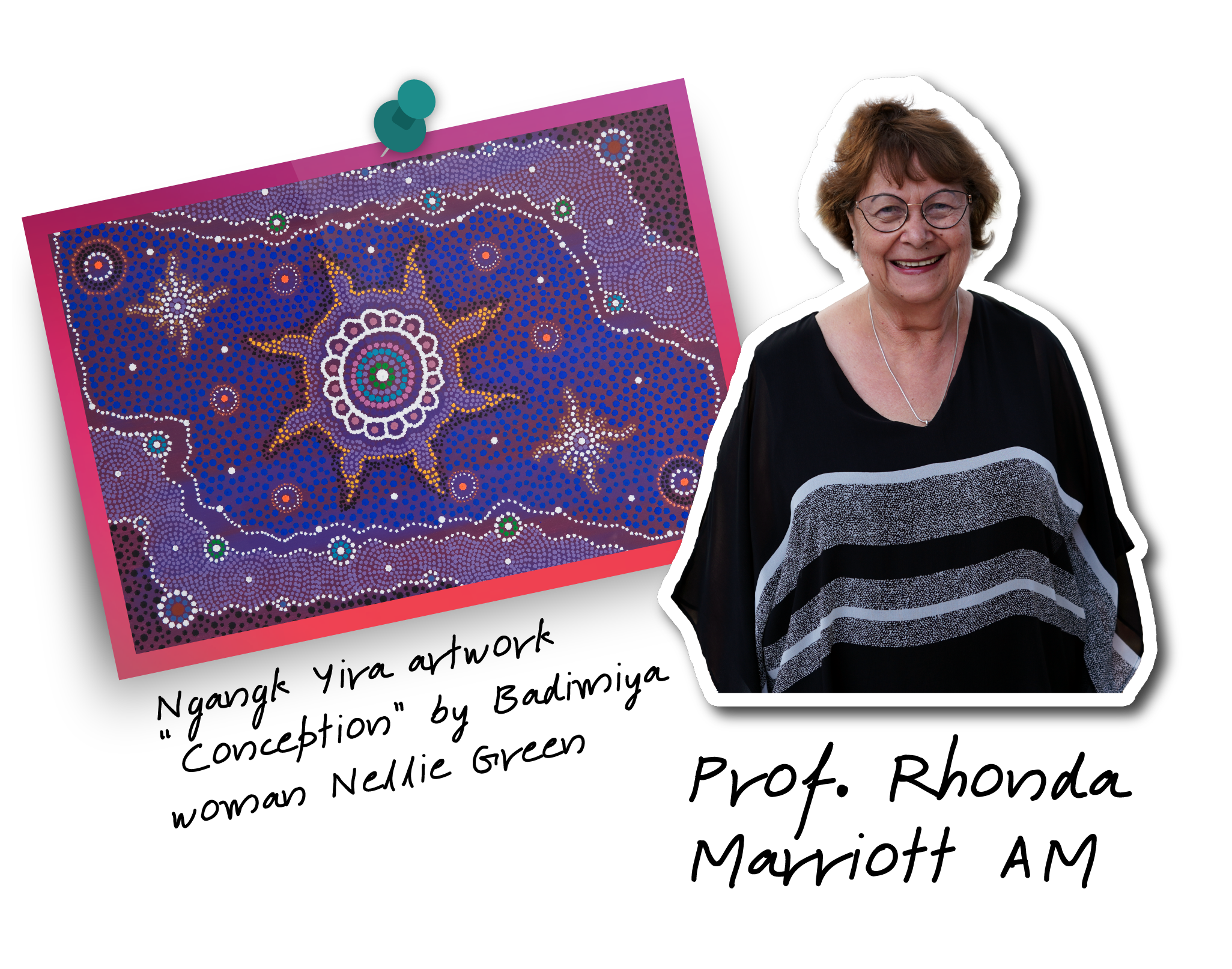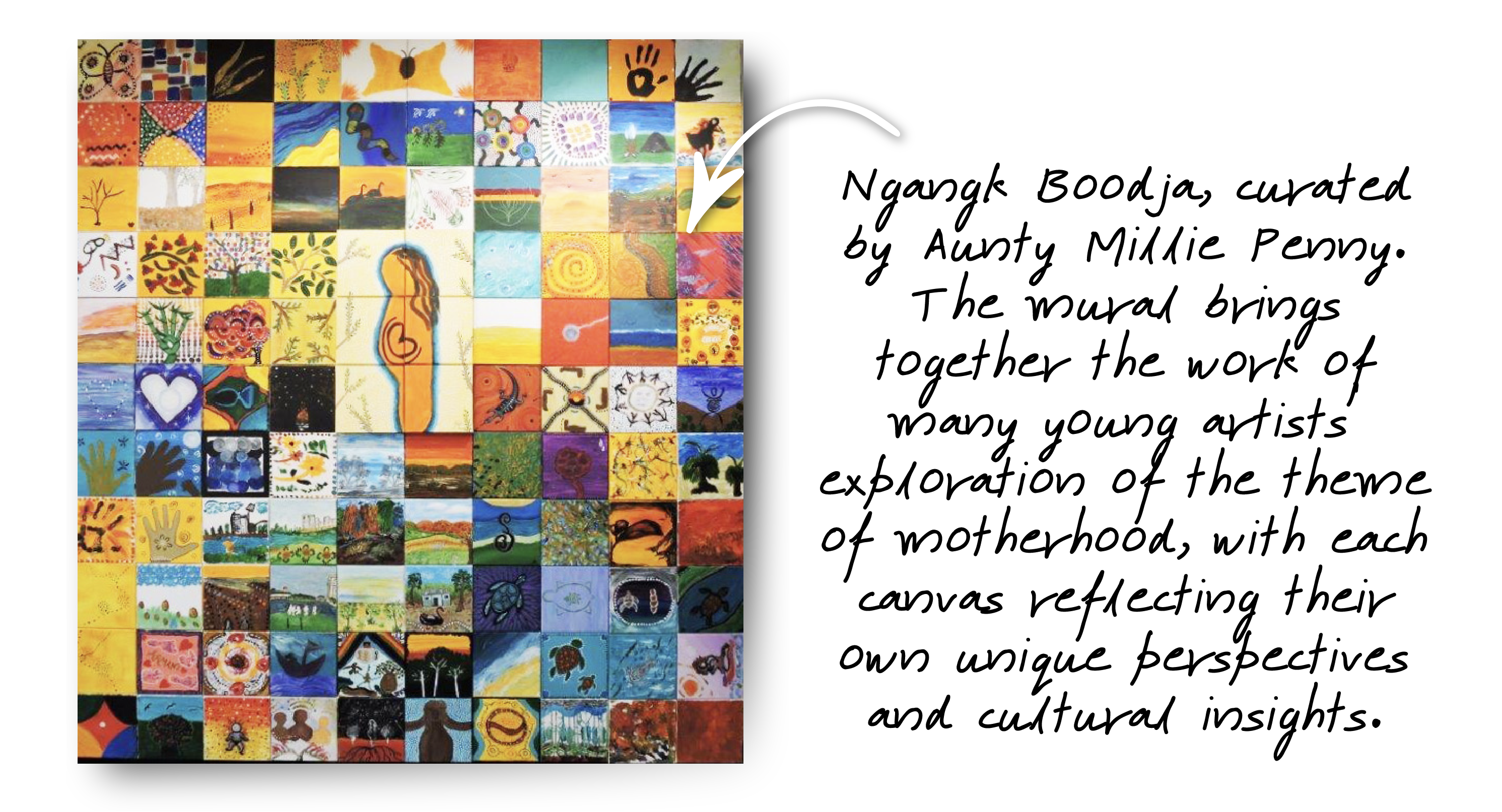A brighter future
for Indigenous health

It took health experts ten years to figure out the most fundamental barrier to better outcomes for Indigenous Australians. Now, the system has not only accepted their evidence but backed their solution.
Indigenous Australians experience worse health than non-Indigenous Australians.
That’s from the very beginning, where fewer babies enter the world with a healthy birthweight, to the end, where there’s an 8-year gap in life expectancy.
“A child’s earliest years undeniably shape their life chances and opportunities,” leading Aboriginal health researcher Professor Rhonda Marriott AM said.
“Gaps between the least and most disadvantaged become apparent in the first years of life and have a cumulative effect.
“So, we know that closing the gap begins with a strong start in life.”
Now, after what feels like a lifetime’s work for Professor Marriott AM and her team at the Ngangk Yira Institute for Change, a new hospital practice is providing that start.

The question that started it all
It all began with the realisation that healthy mothers, on the whole, give birth to healthy children. And healthy mothers are supported physically and mentally by not only their communities, but their health practitioners and the health systems they deliver.
So, what happens when the health system, which has been designed as a ‘one size fits all’ doesn’t fit?


That was the central question the Birthing on Noongar Boodjar project set out to answer. It brought together 18 investigators, 13 partner organisations and 11 members of the Aboriginal Advisory Group to find out.
“We knew the system had not been designed in the right way, by the right people, to provide the best start in life for Aboriginal children,” Professor Marriott AM said.
“So, we went to work with Aboriginal communities across Noongar Country for five years to identify the experiences of women giving birth in metropolitan and some regional centres.”
Live-born singleton babies of healthy birth weight - Australia
Source: Productivity Commission, Closing the Gap dashboard, table CtG2A.1
Through interviews with Aboriginal mothers, senior women and Elders, as well as practicing midwives, the team collected evidence of the various experiences, enablers and challenges associated with culturally safe maternity care for Aboriginal women.
The study identified that more Aboriginal midwives and culturally secure models of care in hospitals are critical to closing the gap in maternity care and childbirth outcomes.
“What we found was that existing healthcare didn’t recognise the potential issues and unique barriers faced by Aboriginal women,” Professor Marriott AM said.
“Maternal health systems were not culturally sensitive or culturally secure.”

A change to the system
When the Ngangk Yira team took this evidence to the Minister for Health of Western Australia at the time and now Premier, the Hon Roger Cook, he recognised the problem and saw merit in their solution.
The overarching recommendation from the research was for a Culturally Secure Maternity Services Pathway for Aboriginal Women at the key tertiary maternity service in WA.


“This was a bold vision, aimed at challenging mainstream approaches which haven’t translated to significant improvements in Aboriginal maternal and child health outcomes.”
In his role as Minister for Health, Mr Cook funded the establishment of exactly that – an Aboriginal Maternity Group Practice at the Women and Newborn Health Service at King Edward Memorial Hospital, which became operational in 2023.
“This is one of the most practical steps ever taken in Western Australia towards closing the gap,” Professor Marriott AM said.
“By properly supporting Aboriginal mothers we can change the life course of entire Aboriginal and Torres Strait Islander families.”
The impact of a lifetime
Pregnancy presents an ideal opportunity for midwives and other health professionals to build respectful and authentic relationships with Aboriginal women and their families.
When this is done well, with cultural safety at the forefront, the potential is created for positive engagement by Aboriginal families with health services. The impact of this isn’t confined to pregnancy and birth – it runs throughout the course of their lives.
“A positive early experience with the health system changes a person’s willingness and confidence to engage with health experts in the future,” Professor Marriott AM said.
“So, if we can get the early years right, we can have a big impact on the whole course of life.
“Getting maternity care right is the beginning of something much bigger.”













